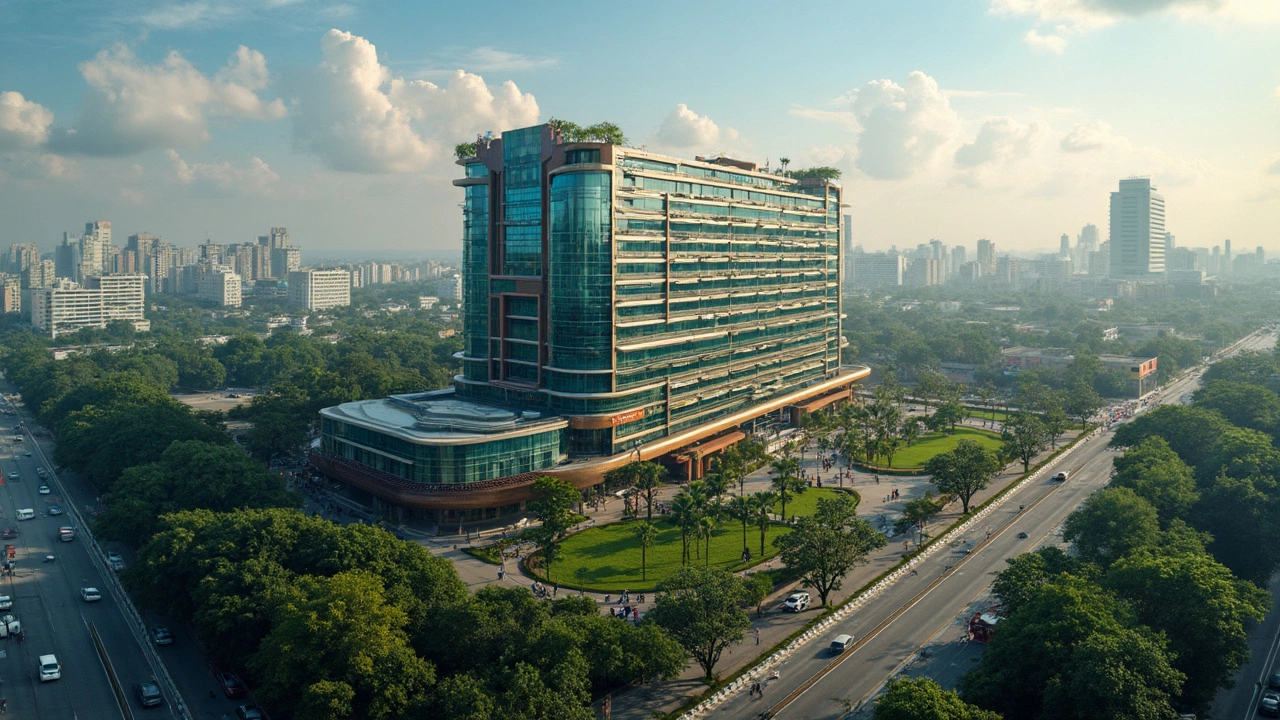India is a powerhouse in the world of pharmaceuticals, home to some of the biggest players in the industry. Right at the top of that list are the Big 4 pharma companies. These aren't just local heroes; they’ve made a mark internationally, supplying affordable medications to countries far and wide. It's impressive how these giants rose to prominence and continue to dominate.
What makes these companies tick? It's not just about sales; they've got massive R&D departments churning out new drugs and generic medications that cater to all sorts of needs—from common ailments to rare diseases.
All this might sound intriguing, but why should you care? Because understanding these companies gives you insight into how the pharma industry in India works and how it impacts global healthcare. Whether you’re in the healthcare sector, a student, or just someone curious about big business, it pays to know who's leading the charge in India's pharma scene.
- Overview of India's Big 4
- Impact on the Global Market
- Research and Innovation
- Challenges and Opportunities
- Future Outlook
Overview of India's Big 4
When we talk about the top players in India's pharmaceutical scene, four names always pop up: Sun Pharmaceutical Industries, Dr. Reddy's Laboratories, Aurobindo Pharma, and Cipla Limited. These guys aren't just big; they're massive, not just in terms of sales but in their global reach and influence. They account for a large share of India's pharmaceutical exports, making them key drivers of industry growth.
Sun Pharmaceutical Industries is like the rockstar of this group. Founded in 1983, it has grown to be the largest pharma company in India and ranks among the top pharmaceutical companies globally. They're huge in the dermatology and cardiology segments and have a strong presence in the US market, pushing their generic and branded drugs.
Then there's Dr. Reddy's Laboratories, which took off in 1984. They're known for their innovation and focus on affordability, making life-saving drugs accessible to more people. The company's products are available in over 100 countries, showing how they've got the international game on lock.
Aurobindo Pharma hit the scene in 1986 and has since made its mark by leading in developing antibiotics. They're mainly known for their sprawling product portfolio, which covers pretty much every aspect of healthcare you can think of. Their extensive presence in the EU and US markets showcases their wide reach.
Last but not least, you've got Cipla Limited. They kicked off way back in 1935, giving them a long history of contributing to healthcare. Cipla stands tall in respiratory, HIV/AIDS treatment, and oncology, and they’re known for their humanitarian efforts to make drugs affordable worldwide.
| Company | Founded | Key Markets |
|---|---|---|
| Sun Pharma | 1983 | US, India, Emerging Markets |
| Dr. Reddy's | 1984 | US, Russia, India |
| Aurobindo Pharma | 1986 | EU, US, India |
| Cipla | 1935 | India, South Africa, North America |
These companies aren't just stuck on selling old-school formulas. They've invested heavily in research and development, ensuring that they keep up with global trends and medical needs. No wonder they're considered the Big 4 of India pharma manufacturers.
Impact on the Global Market
India's pharma manufacturers have carved out a significant niche in the world's pharmaceutical landscape, with the Big 4 leading the way. These companies are driving forces behind the affordable medication movement, providing access to essential drugs that might otherwise be too costly in developing nations.
The Big 4 are major players in the generic drug market. They produce a substantial percentage of the world's generic medicines, which has helped lower healthcare costs globally. Through strategic pricing and high-quality standards, they’ve made it possible for millions worldwide to access treatments they might not have been able to afford.
One key to their global success is the export of generics to the United States and Europe, where they meet rigorous quality checks. In fact, India is the largest provider of generic drugs to the U.S. market. That’s not just impressive; it’s a testament to the trust these companies have built globally.
Moreover, the Big 4 are continually expanding their reach with strategic partnerships and acquisitions across the globe. This expansion isn’t just about getting bigger—it's about gaining cutting-edge technologies and widening their product portfolio. This kind of growth ensures that they remain at the forefront of the pharmaceutical industry.
These companies also play a key role in vaccine production, illustrated vividly during the COVID-19 pandemic. Their swift response and capability to mass-produce vaccines underlined the strategic importance of India in global health.
The global impact of India's leading pharma companies is indeed profound. They’re not just supplying drugs; they’re shaping the future of global healthcare, all while flying the Indian flag proudly on the world stage.

Research and Innovation
Research and innovation are the beating heart of India's top pharma companies. These companies don't just rest on their laurels; they're constantly pushing to make healthcare more accessible and effective. It's no wonder India's pharmaceutical manufacturers are hailed as some of the most resourceful and efficient in the world.
Picture this: these companies pour a significant chunk of their revenue back into research and development (R&D). They’re committed to creating groundbreaking medications that cater to various health concerns, from common colds to chronic illnesses like diabetes and cancer.
One interesting thing is how these firms often collaborate with both local and international labs. This joint effort helps speed up the process of bringing new drugs to market. If you're in the industry, this is a big deal because time is money, and getting treatments out faster can save lives.
Take a look at innovative strides in producing affordable generic drugs, which help lower healthcare costs for patients worldwide. Thanks to these innovations, millions of people can access medicines they otherwise couldn’t afford. Innovation isn't just about inventing new drugs—it's also about improving manufacturing processes, ensuring they are safe and efficient.
In their quest for innovation, companies are not just relying on traditional methods. They're also diving into areas like biotechnology and precision medicine, which promise to tailor treatments to individual needs. This shift towards personalization is a game-changer, potentially offering better outcomes for patients.
What really stands out is the adaptability of India's pharma manufacturers. As new health challenges emerge, these companies prove they're up to the task, consistently tweaking their research strategies to meet the demand. It's this innovative spirit that keeps them at the forefront of the global pharma industry.
Challenges and Opportunities
The pharma industry in India is no cakewalk. These Big 4 companies face a bunch of challenges that keep them on their toes. First up, there's the whole thing with regulations. They have to constantly keep up with not just India's rules but also various international compliance standards if they want to export their products. It’s like juggling a bunch of balls without letting any fall!
Another hurdle is competition—not just from local players but from global giants. They really have to step up their game in terms of quality and innovation to stand out. Then there's the pressure to keep medicines affordable while maintaining profitability. Balancing these demands is tricky, to say the least.
But it’s not all hurdles; there are plenty of opportunities too. Like, there's India's massive population that offers a huge market. With an aging population and increasing healthcare awareness, the demand for medications is only going up. Plus, with increasing healthcare budgets across the world, the horizon for generic drugs from India looks pretty bright.
India's growing IT capabilities also present new avenues for growth. With advances in biotechnology, AI in drug development, and telemedicine, the pharma companies can leverage technology to improve outcomes and reduce costs.
And here’s an interesting fact: a huge chunk of global vaccines is supplied by these manufacturers. So, with the ongoing need for vaccinations worldwide, they’re in a solid position to further expand their reach.
Lastly, collaborations with academic institutions can lead to discovery of breakthrough molecules. Not to mention, government initiatives supporting pharma R&D add an extra layer of opportunity for these top pharma companies in India. Everyone’s trying to get ahead in this race, and those who innovate first usually get the bigger slice of the pie.

Future Outlook
When it comes to the future of the India pharma manufacturers, there's a lot riding on innovation and expansion. The industry is expected to grow significantly, fueled by the increasing demand for affordable healthcare solutions around the world. The push towards digital health is opening new doors for these companies to diversify their offerings beyond traditional medications.
One major trend that's catching fire is personalized medicine. Imagine getting treatments tailored specifically to your genetic makeup—sounds sci-fi, but that's where we're heading. The top pharma companies in India are investing heavily in research to make this a reality. Their focus on R&D is cementing India's place as a leader in global pharmaceutical innovation.
Yet, it's not all smooth sailing. Challenges like regulatory hurdles and intense global competition make the path forward a bit tricky. However, these companies aren’t shying away from the challenge. The strategy is to ramp up production capabilities and invest in building robust supply chains. As more countries look for reliable pharma partners, India's big players are poised to step up.
There's a rising focus on green manufacturing practices, too. Sustainability is no longer just a buzzword; it's a necessity. The Big 4 are exploring ways to reduce their carbon footprint, ensuring they meet both regulatory standards and public expectations. This move not only helps the planet but also boosts their reputation worldwide.
So, what's next for these pharma giants? With the global pharmaceutical market projected to reach over $1.5 trillion by 2030, India’s pharma sector has enormous growth potential. These companies are not just keeping pace with the future—they're shaping it. And that's a future full of potential for both the industry and the world at large.
